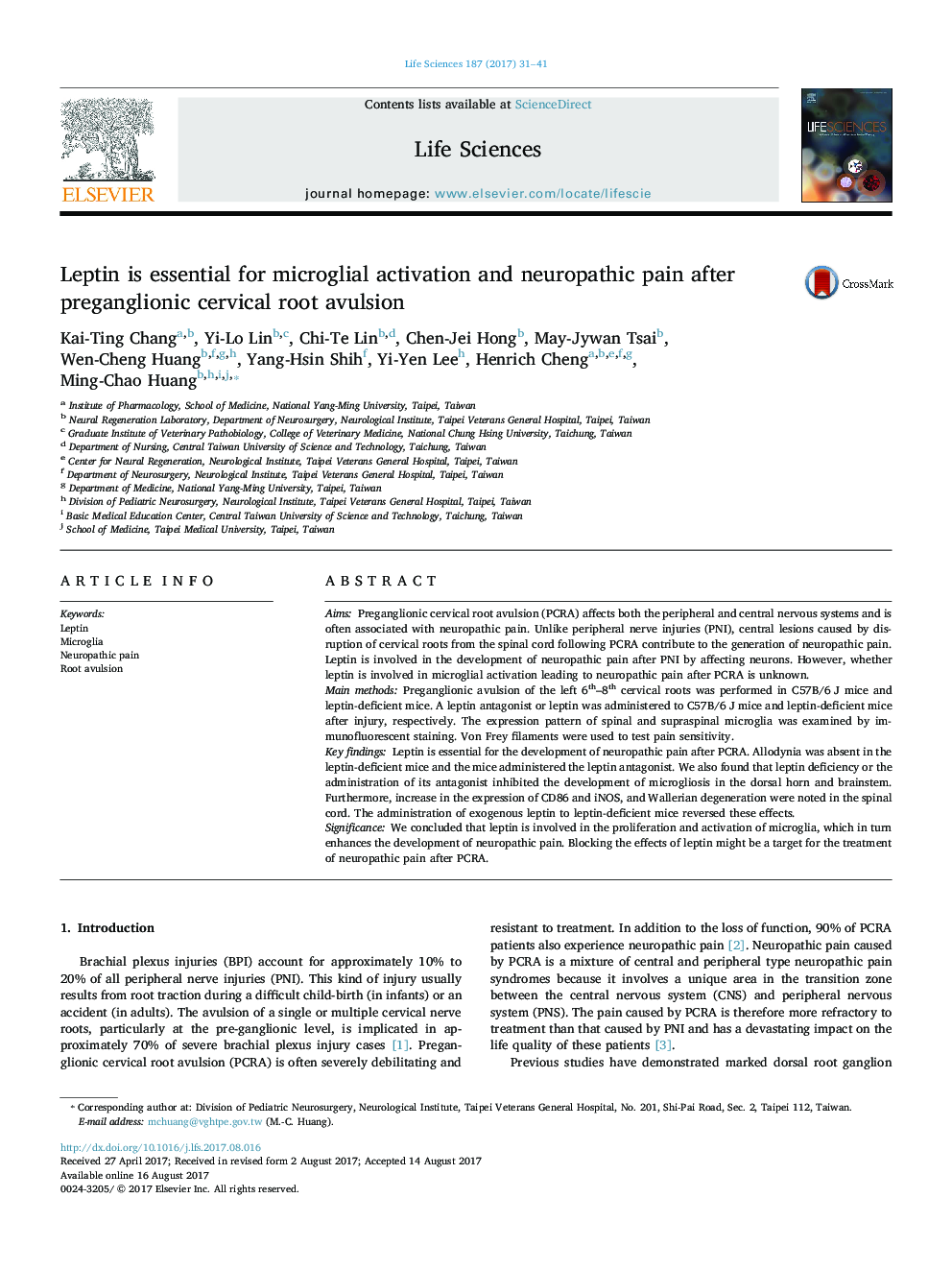| Article ID | Journal | Published Year | Pages | File Type |
|---|---|---|---|---|
| 5556810 | Life Sciences | 2017 | 11 Pages |
AimsPreganglionic cervical root avulsion (PCRA) affects both the peripheral and central nervous systems and is often associated with neuropathic pain. Unlike peripheral nerve injuries (PNI), central lesions caused by disruption of cervical roots from the spinal cord following PCRA contribute to the generation of neuropathic pain. Leptin is involved in the development of neuropathic pain after PNI by affecting neurons. However, whether leptin is involved in microglial activation leading to neuropathic pain after PCRA is unknown.Main methodsPreganglionic avulsion of the left 6th-8th cervical roots was performed in C57B/6Â J mice and leptin-deficient mice. A leptin antagonist or leptin was administered to C57B/6Â J mice and leptin-deficient mice after injury, respectively. The expression pattern of spinal and supraspinal microglia was examined by immunofluorescent staining. Von Frey filaments were used to test pain sensitivity.Key findingsLeptin is essential for the development of neuropathic pain after PCRA. Allodynia was absent in the leptin-deficient mice and the mice administered the leptin antagonist. We also found that leptin deficiency or the administration of its antagonist inhibited the development of microgliosis in the dorsal horn and brainstem. Furthermore, increase in the expression of CD86 and iNOS, and Wallerian degeneration were noted in the spinal cord. The administration of exogenous leptin to leptin-deficient mice reversed these effects.SignificanceWe concluded that leptin is involved in the proliferation and activation of microglia, which in turn enhances the development of neuropathic pain. Blocking the effects of leptin might be a target for the treatment of neuropathic pain after PCRA.
